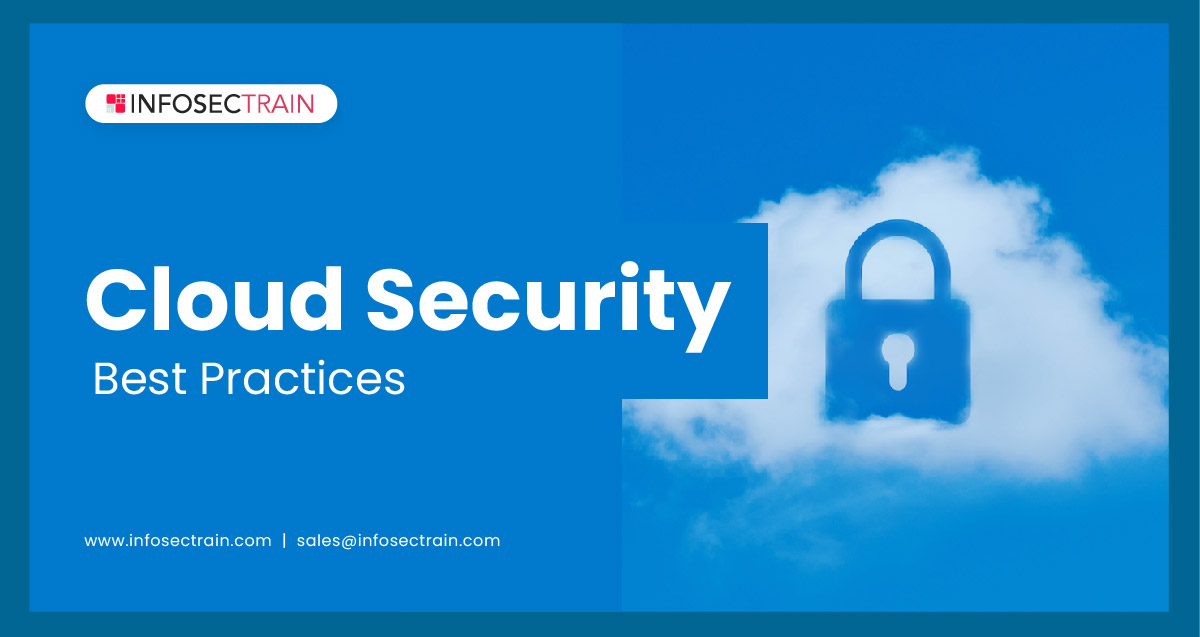Cloud Security Best Practices
Many companies are adopting cloud computing technology, and cloud-based services have been predominantly enriching in recent years. Small and medium-sized businesses actively use cloud solutions instead of maintaining heavy infrastructure. But maintaining cloud security is a shared responsibility between the organization and the Cloud Service Provider.

Table of Contents
What is Cloud Security?
Why is Cloud Security Important?
Cloud Security Best Practices
By default, Cloud Service Providers follow best security practices and take necessary precautions to secure the integrity of their servers. However, organizations must follow the best measures in protecting data, applications, and workloads running on the cloud. This article is curated with the best practices for Cloud Security.
What is Cloud Security?
Cloud Security includes a set of policies, procedures, methods, and controls used to protect the cloud-based system, infrastructure, and data from potential threats. These security measures are configured to protect cloud data and customer privacy, implement authentication rules and support regulatory compliance. Cloud security can be configured from authenticating access to the traffic filtering process based on the organization’s requirements.
Why is Cloud Security Important?
The Cloud computing environment has provided the benefits of managing IT sources and supporting all kinds of industries over multiple verticals. With the advancement of digital technology, organizations are experiencing advanced security threats and making cloud security a priority concern. With the lack of visibility in data access, the threats will continue to grow, explicitly targeting Cloud Service Providers. Cloud security is vital to safeguard the organization’s data and assets and mitigate security governance and compliance risks.
Cloud Security Best Practices
These days, security threats are continuously emerging and becoming more sophisticated, and cloud infrastructure is also experiencing security risks. Implementing robust cloud security best practices is required to mitigate cloud security threats. The following best practices help to ensure the strong protection of the organization’s data and applications:
1.Choosing the right Cloud Service Provider
There are several Cloud Services Providers in the market, in which choosing the best suitable one begins with assessing the provider’s cloud security compliances and certifications. Choose the best appropriate Cloud Service Provider that meets your security requirements based on the organization’s requirements and security goals.
The following are the common questions that every organization should ask the Cloud Service Provider:
- Where do the provider servers locate geographically?
- What would be the provider’s disaster recovery plan?
- What are the key services and capabilities offered by them?
- What level and mode of technical support services the provider offers?
- Does the provider encrypt the data while in rest and transit?
- What would be the provider’s protocol for suspected security incidents?
- What are the authentication methods implemented by the provider?
2. Understand the Shared Responsibility Model
Cloud Service Providers do not take complete responsibility for securing the organization’s data. However, the contract with the cloud provider will define the limits of their responsibility in hosting the infrastructure, servers, and network controls. It helps organizations to take control over the identity and access management policies. The Shared Responsibility Model varies with the use of different cloud services such as Infrastructure-as-a-service and Platform-as-a-service.
3. Implementing Identity and Access Management
Identity and Access Management is essential to safeguard the organization’s assets, systems, and data from unauthorized users. It provides adequate security controls such as authentication, verification, authorization, and provisioning of storage for cloud infrastructure. Also, it allows users to set the access levels that help to know how much data can be changed or viewed by the person even after possessing the access.
4. Data Encryption
Data Encryption is the best way to secure the data from unauthorized access. An organization should encrypt its data in the cloud environment and ensure that the data is also encrypted at rest & during transit. Cloud Service Providers offer data encryption services.
5. Protecting user endpoints
Organizations are required to deploy endpoint security solutions to protect end-user devices. The best way to secure user endpoints is to implement tools with internet security measures such as Malware solutions, Firewalls, IAM tools, and Automation tools.
6. Use Log Management and Continuous Monitoring
Log management and continuous monitoring are mandatory to ensure visibility and secure business operations. With the help of logging and monitoring systems, the organization can identify unauthorized users quickly and allow cloud security professionals to secure the organization’s assets. If the unauthorized user accesses the system, the log management will provide the details of changes made in the data that help resolve the issue promptly.
Cloud security is an essential requirement for all organizations, especially with the latest research from (ISC)2, which states that 93% of organizations are concerned about cloud security, and one in four organizations endorsed a cloud security incident in the past 12 months. With the best practices and leveraging the relevant tools, organizations can mitigate the cybersecurity risks and avail the exclusive benefits of cloud computing.
Become Cloud Security Engineer with InfosecTrain
InfosecTrain offers an instructor-led training program on Certified Cloud Security Engineer (CCSE) accredited by EC-Council. It helps you to get a complete understanding of how to plan, implement, and execute cloud solutions in the organization. The training course also covers the best practices for cloud security to protect cloud infrastructure. To get certified, check out and enroll now.







 1800-843-7890 (India)
1800-843-7890 (India)